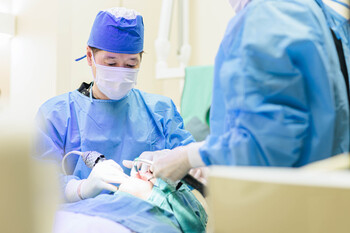Program details
All-on-4 or All-on-6 Dental Implant Surgery(Katsube Dental Clinic)
No.k0615-1
Dental
Katsube Dental Clinic(Kinki/Osaka)
Recommended for those with ragged teeth.
Comfortable conversation and eating, younger looking.
We strive to improve the safety and accuracy of surgery by creating a pre-surgery simulation to determine the position and depth of implant placement prior to surgery. For those who are not comfortable with pain, intravenous sedation anesthesia is also available.
- Genres
-
- Department
- Disease
- Examination Items/Treatments/Surgical method
- Region/Organ
- Program Summary
- ■Target Diseases: Patients with missing teeth, most teeth with periodontal disease
■Site: Teeth, alveolar bone, maxilla, mandible, (if it will be a zygoma implant) zygomatic bone
■Treatment features: Four or six implants are placed in each jaw. They serve as artificial tooth roots and support fixed dentures. After the implants are firmly bonded to the bone, a dental technician creates and installs a specially made fixed denture. This denture is secured to the implant via an abutment attached to the implant.
■After treatment: Because it is fixed, there is little impact on speaking and eating. No pain or discomfort characteristic of dentures, and a natural appearance similar to natural teeth. The jawbone is less likely to lose weight. Temporary teeth are inserted immediately after the surgery, and you can start chewing on the same day.
- Medical Institutions
-
Katsube Dental Clinic
〒530-0057
COFFRET UMEDA 3F 2-12-4, Sonezaki Kita-ku, Osaka-city,
Google Map Map
- Examination Items
- Setup Date
- Excluded days
- Required Days/Hours
- Start/end time
- Eligibility Criteria/Exclusions for Treatment
- Although a temporary denture is placed on the day of surgery, it takes about six months until the final denture is made, and 3-5 times visits to the hospital are required to adjust the denture.
- Precautions / Contraindications
- The jaw bone where the implant is to be placed contains the roots of teeth, nerves, blood vessels, nasal cavity, and maxillary sinus, which may be damaged during surgery. As a result, bleeding, hypersensitivity, infection, etc. may occur.
There is a possibility of postoperative pain, edema (swelling of the face), subcutaneous bleeding (bruising), nosebleeds, infection, etc. (postoperative complications).
In rare cases, infection may occur, or the bone may not be properly connected to the bone.
Gums of neighboring teeth may fall after the surgery, and the crown may need to be redone in order to maintain esthetics.
The tooth may break if the bite force is too strong.
Rarely pain may occur because the nerves are left in place for treatment.


